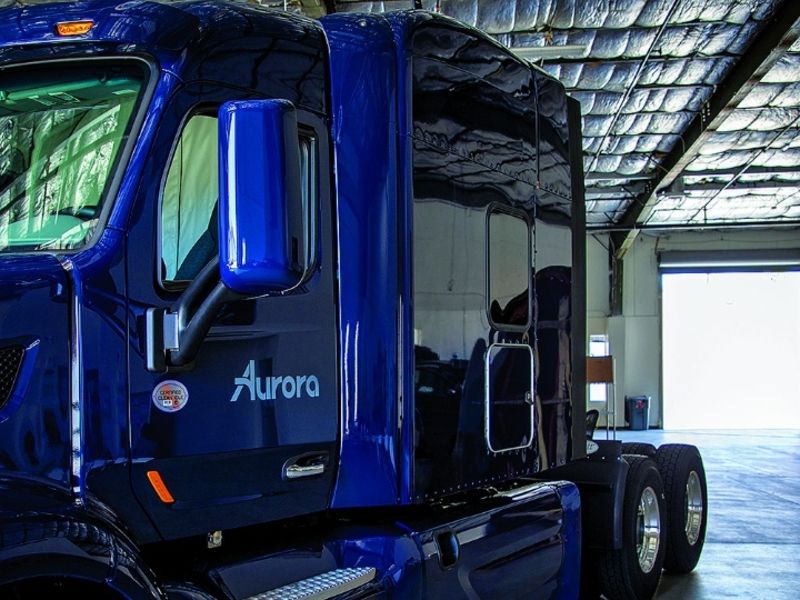
About a half-dozen driverless testing deployments. The unveiling of perhaps the most thoughtful self-driving vehicles produced to date. A blockbuster acquisition.
No, the final stretch of 2020 has not lacked for excitement.
In a year in which many wondered whether the pandemic would slow the pace of autonomous-driving developments, the opposite has happened, and the scramble of activity has underscored the potential of robotaxis carrying passengers around urban areas.
It also has brought into sharper focus the business models that companies are formulating to capture a slice of what Zoox CEO Aicha Evans calls a “multitrillion-dollar opportunity.”
Zoox may be the most ambitious in its aspirations. From its inception six years ago, the Bay Area startup embarked on a plan to handle the major challenges involved in a ride-hailing business all by itself: Develop its own self-driving system. Create an all- electric, purpose-built vehicle from scratch. Establish its own ride-hailing network.
Those efforts remain a work in progress. But Zoox took a step forward last week with the public unveiling of its four-passenger shuttle with a power supply that can last as long as 16 hours and which has bidirectional driving capability. (See story on Page 8.)
In a business in which the word “innovative” gets tossed around like spare nickels, the Zoox vehicle truly qualifies as such.
It’s not hard to imagine the emerging commercial battlegrounds: Someday Zoox will compete with the six-seat Cruise Origin in the dense confines of San Francisco and in Las Vegas with the service that Motional — the brand created by the Hyundai-Aptiv joint venture — is partnered in with Lyft.
While Zoox has a long way to go in cobbling together its own ride-hailing network, the arrival of its vehicle has burnished the company’s bona fides and affirmed the go-it-alone approach, Evans said.
“A couple of our competitors said, ‘They’re just smoking something, I don’t know what, over there,’ ” she said. “They said, ‘They can’t build a vehicle’ or ‘It’s not going to be autonomous.’ There was a lot of ‘can’t, can’t, can’t.’ … They called it ‘vaporware horseshit.’ We took it in stride. Our first vehicle, we were code-naming VH1, and then 2, 3. We’re now on No. 6. This is a mission-driven, dedicated, resilient company.”
Given that Amazon acquired Zoox this year for $1.2 billion, it’s natural to wonder whether Zoox’s autonomous-driving technology and city- minded vehicle could deliver packages.
Not far-fetched, Evans says, but the company is squarely focused on carrying passengers now.
Aurora, the startup co-founded by veterans of Google, Tesla and Uber, may be Zoox’s mirror opposite.
Since its inception, the company has focused on one thing: Building a virtual driver versatile enough to control vehicles ranging from last-mile delivery vehicles to Class 8 trucks.
While robotaxis have been part of Aurora’s longer-term strategy, the company has made no secret of its efforts to prioritize trucking applications. Curious, then, that Aurora announced its intentions to acquire Uber’s Advanced Technology Group last week, a deal in which Aurora receives ATG and $400 million in exchange for a 26 percent stake in the company.
Uber ATG shuttered its self-driving truck division in July 2018 to concentrate on self-driving taxis.
Trucks remain Aurora’s first goal. CEO Chris Urmson says the acquisition gives the company more horsepower on both trucks and taxis.
“This is increasing the talent pool that we have, which means we’re going to be able to push the driver forward on both fronts,” he told Automotive News. “I think that’s really exciting, because we see both of these verticals as important for the long-term success of the company.”
While Aurora pushes forward on its virtual driver, it will rely on others for vehicle supply and a ride-hailing network.
The deal with Uber brings aboard Toyota Motor Corp., which had been an investor in Uber ATG and by virtue of the acquisition is now an investor in Aurora. Hyundai also is an investor in Aurora.
Once Aurora is ready to deploy vehicles, the relationship with Uber paves the way to a ready-made ride- hailing service that ranks among global leaders. Instead of creating a vehicle, developing a self-driving system and forging its own network, Aurora has decided to do one thing well.
“Building a business in any one of those spaces is basically requiring a miracle,” Urmson said. “If our business model were to do all three, then we’d be kind of a three-miracle company. I feel like it’s enough to ask for one miracle.”
It’s a different approach from the one taken by Zoox. But there’s one commonality between the companies: Amazon. Sixteen months before it acquired Zoox, Amazon made an undisclosed investment in Aurora’s $530 million Series B round in February 2019.
Trucks or robotaxis? Jack-of-all-trades or a master of one? These are divergent avenues leading into the self-driving future. Meanwhile, Amazon’s investment in one and purchase of the other is reminiscent of the old cliché: Upon reaching a fork in the road, take it.